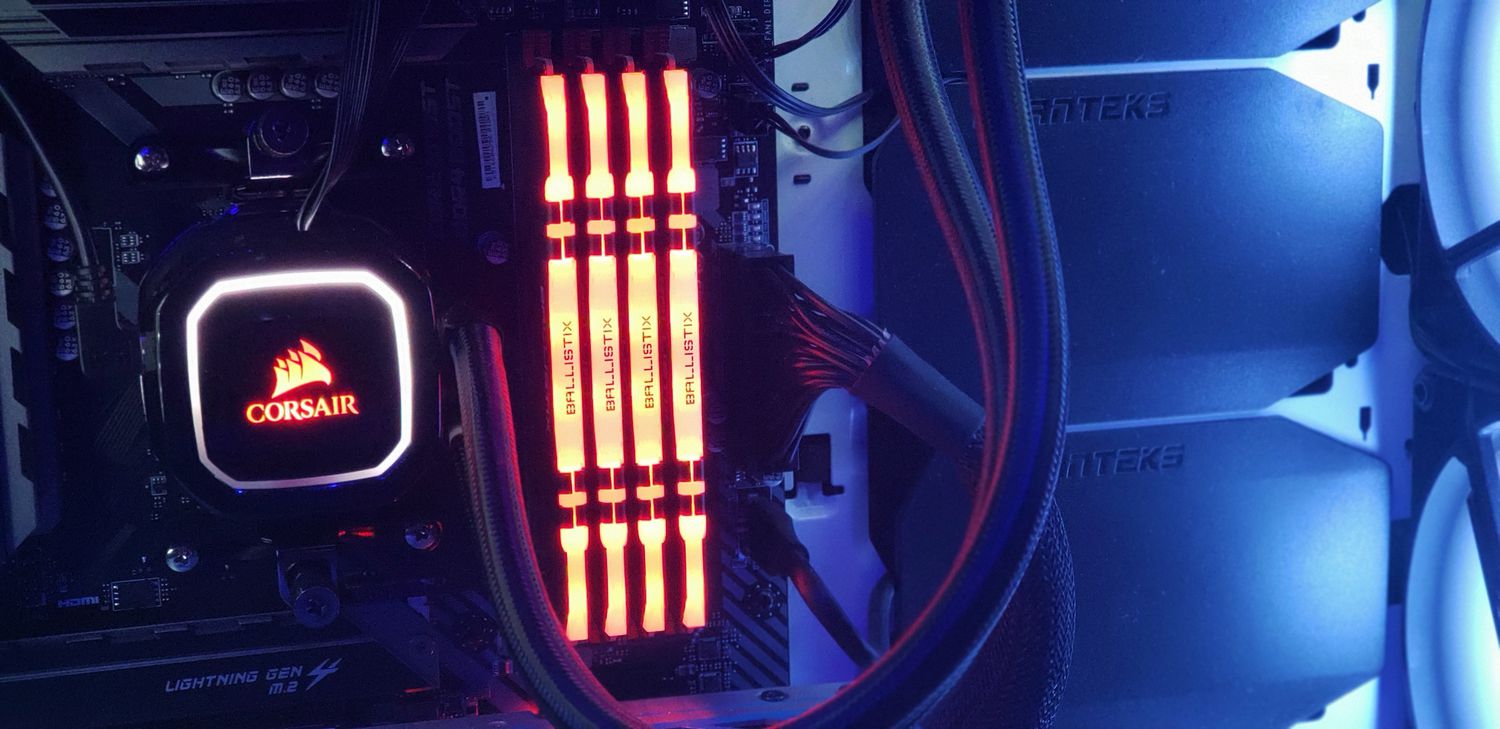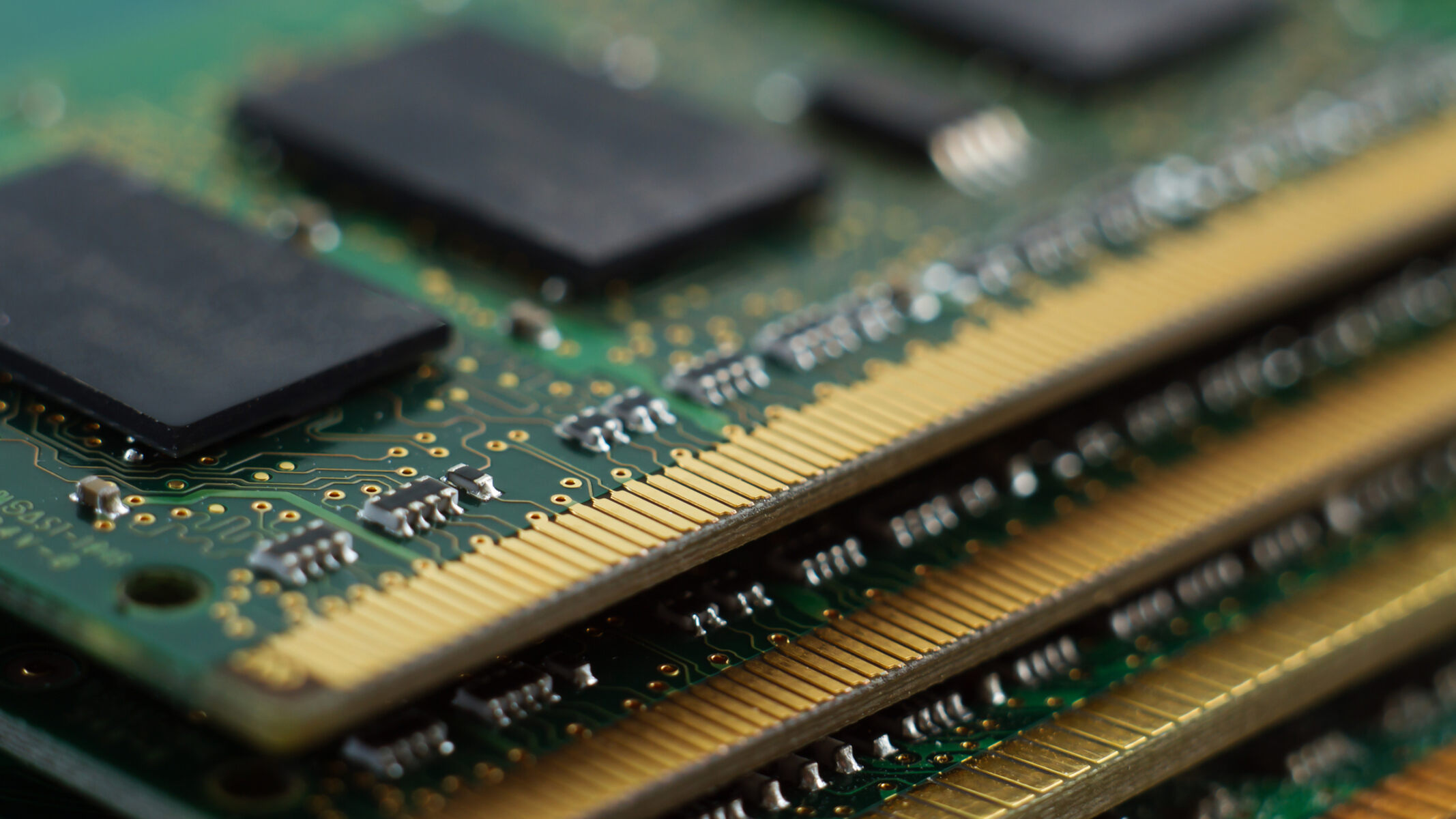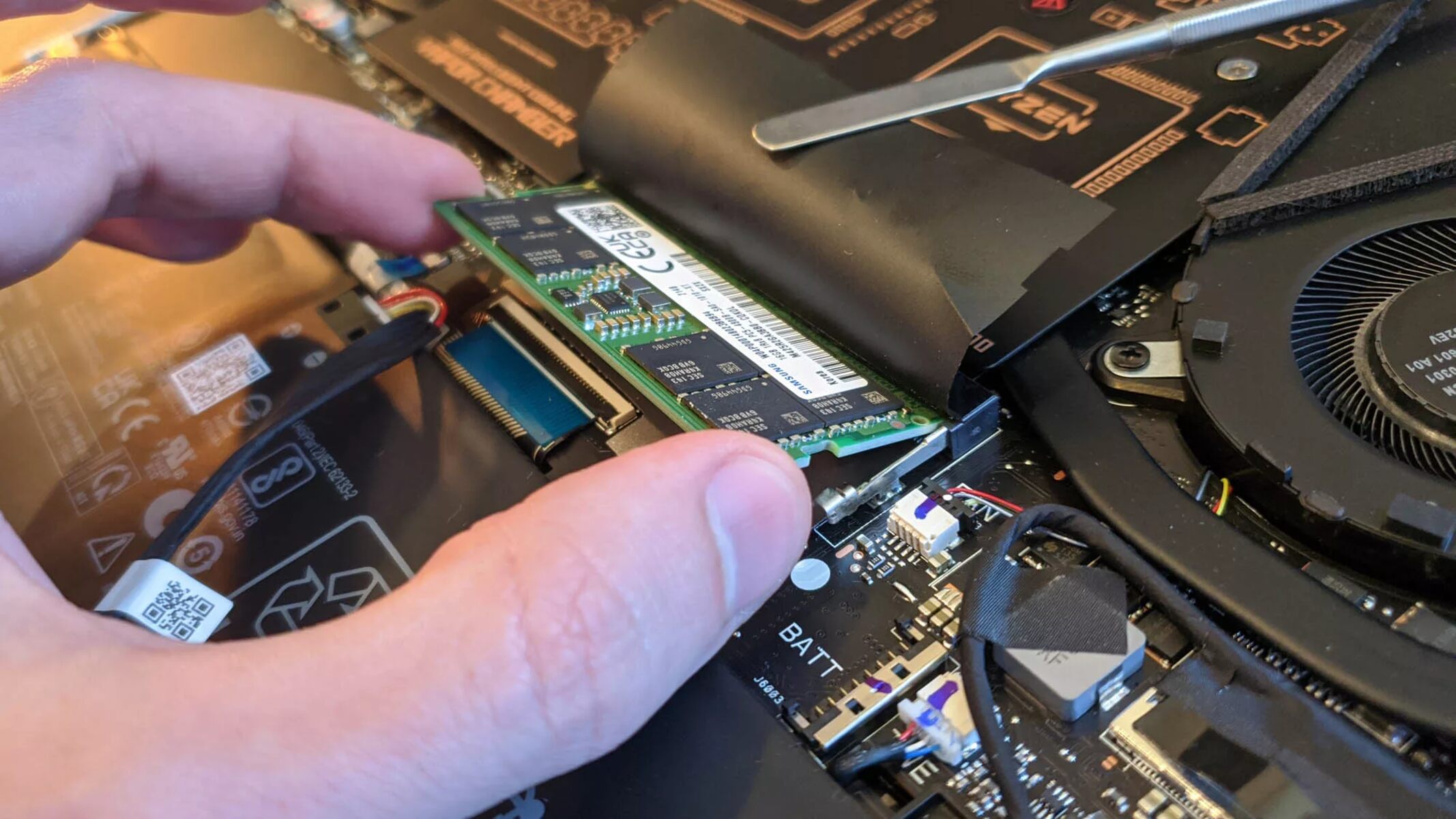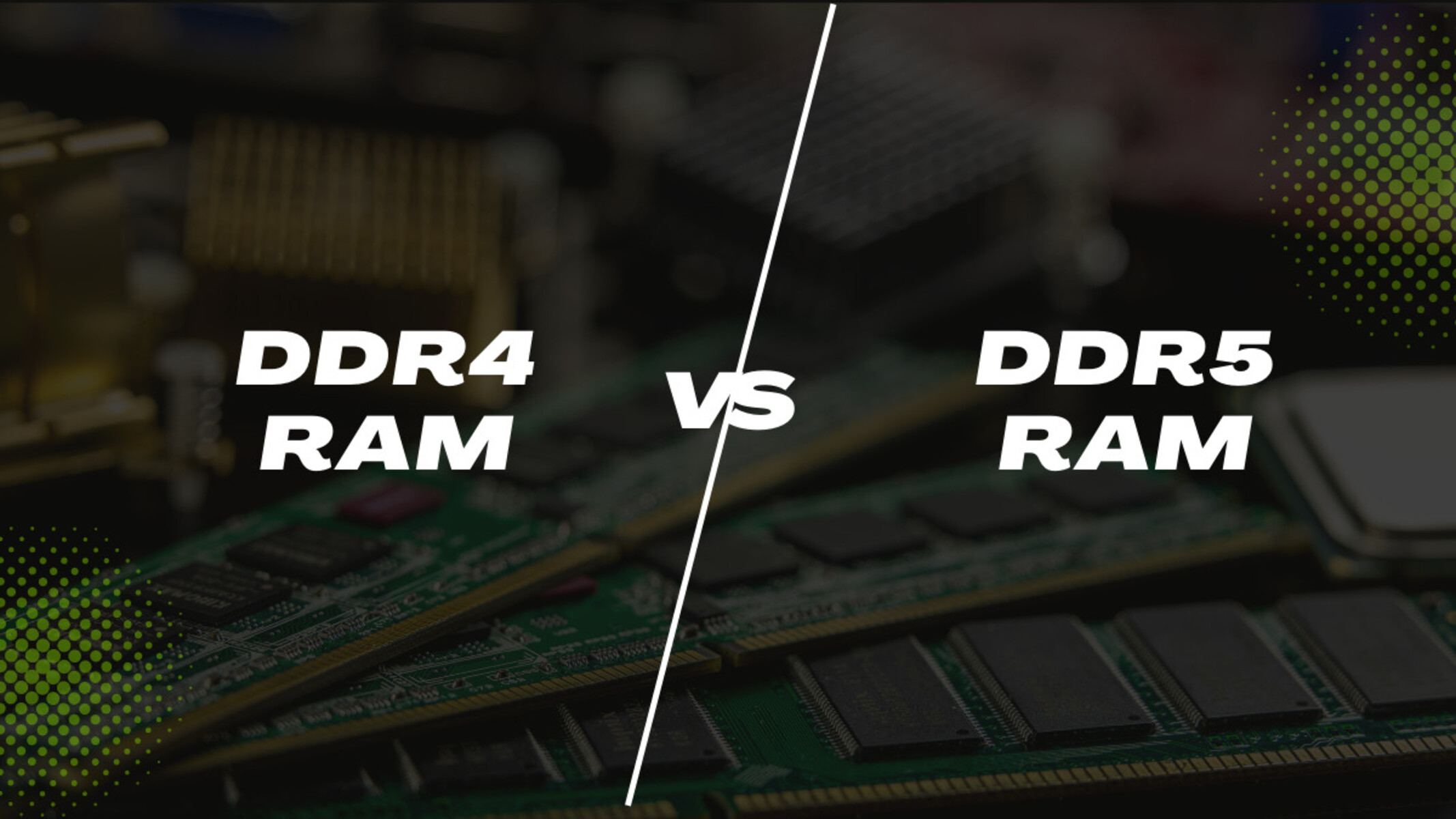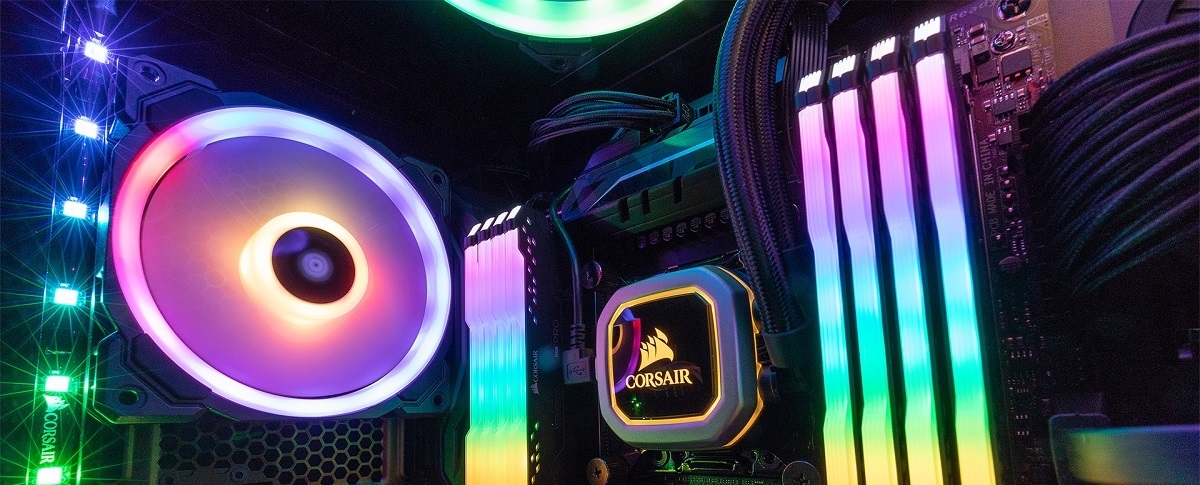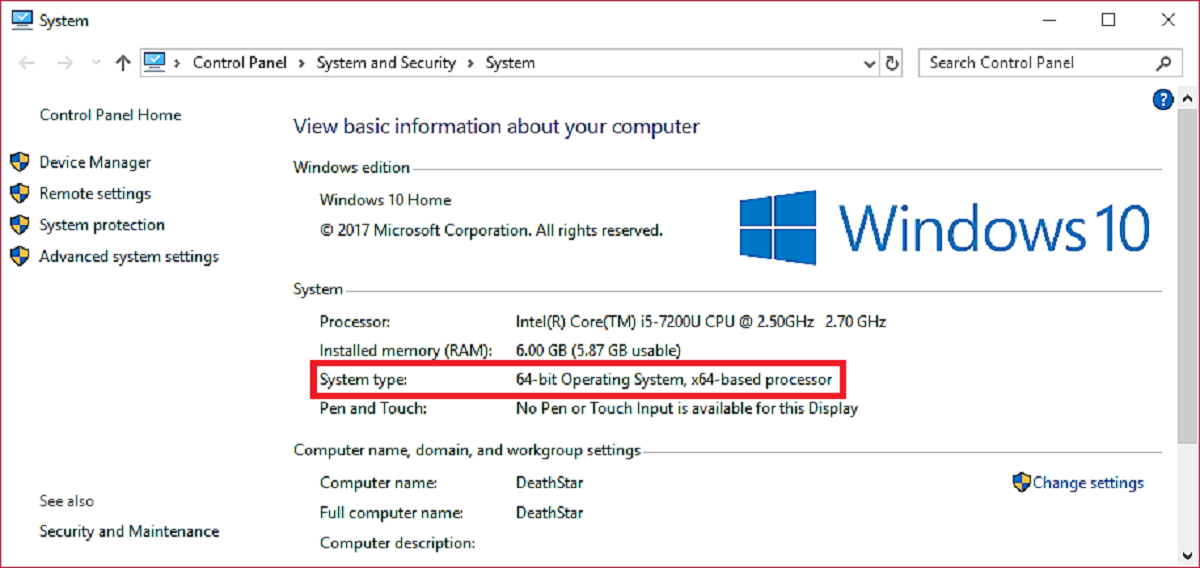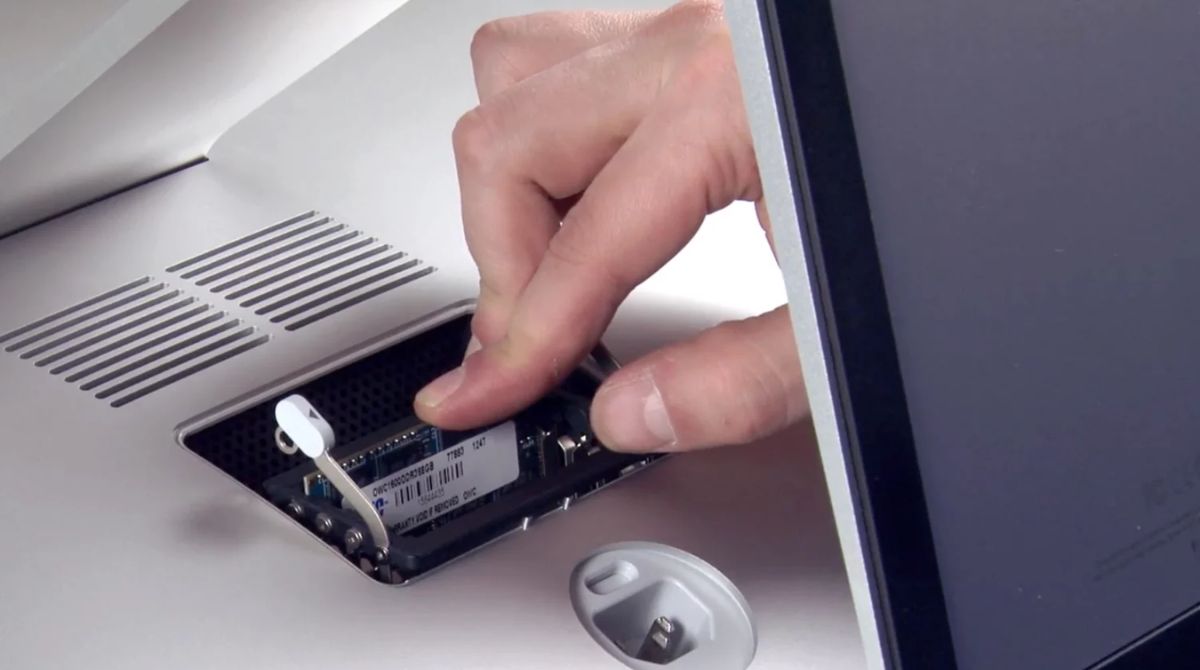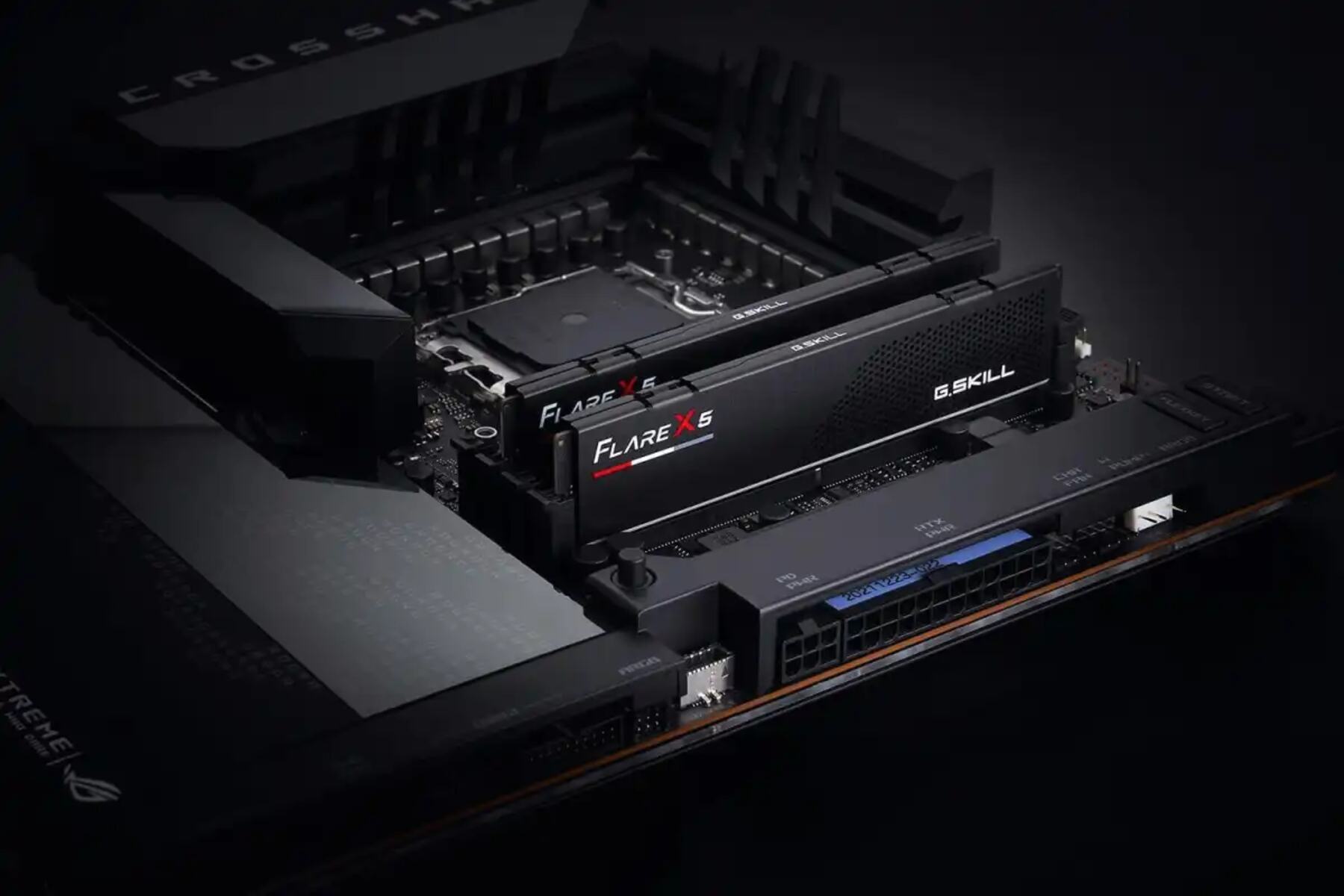Introduction
Welcome to the fascinating world of computer memory! If you’ve recently upgraded your computer’s RAM (Random Access Memory), you might be wondering how to get the most out of your investment. Did you know that your computer can have multiple RAM slots? And that using all four of them can significantly boost your system’s performance?
In this guide, we’ll walk you through the process of utilizing all four RAM slots in your computer. But before we dive in, let’s quickly understand what RAM slots are and why they are crucial for your computer’s speed and multitasking abilities.
RAM slots, also known as memory slots or DIMM slots, are physical slots on your computer’s motherboard that allow you to insert RAM modules. RAM is a vital component of your system, as it stores and provides quick access to data that your computer needs to perform various tasks. The more RAM you have, the more data your computer can handle at once, resulting in faster and more efficient performance.
Now, you might be wondering, “Why should I bother using all four RAM slots? Can’t I just use one or two?” Great question! Using all four RAM slots provides several benefits, including improved multitasking capabilities, increased total memory capacity, and enhanced data transfer speeds. Plus, it’s a relatively simple way to optimize your system’s performance without breaking the bank.
However, not all motherboards support four RAM slots. To ensure compatibility, it’s crucial to check your motherboard’s specifications. Don’t worry; we’ll discuss compatible motherboards in more detail later in this guide.
If you’re ready to unleash the full potential of your RAM and take your computer’s performance to the next level, let’s get started with our step-by-step guide on how to use all four RAM slots!
Understanding RAM Slots
Before we dive into the process of using all four RAM slots, it’s important to have a solid understanding of what RAM slots are and how they work.
RAM slots, also referred to as memory slots or DIMM (Dual In-Line Memory Module) slots, are physical connectors on your computer’s motherboard designed to hold RAM modules. These modules are small circuit boards that contain memory chips, responsible for storing and accessing data quickly.
Typically, desktop computers have four RAM slots, although some may have more or fewer. Laptops often have fewer slots due to their compact design. Each RAM slot can hold one memory module, allowing you to increase your computer’s overall memory capacity.
RAM slots come in different generations, represented by the type of RAM they support. The most common types of RAM used in modern systems are DDR4, DDR3, and DDR2. It’s important to note that RAM modules are not interchangeable between different slot types. For example, DDR4 RAM modules will not fit into DDR3 or DDR2 slots, and vice versa.
When selecting RAM modules for your computer, it’s essential to consider their compatibility with the motherboard’s RAM slot type. You can usually find this information in the motherboard’s documentation or by visiting the manufacturer’s website.
Another factor to consider is the speed at which the RAM modules operate. RAM speed is measured in megahertz (MHz) and determines how quickly the memory can transfer data. Higher MHz values result in faster data transfer rates, which can lead to improved overall system performance. However, it’s important to make sure that your motherboard supports the desired RAM speed, as some older motherboards may have limitations.
In addition to speed, the capacity of each RAM module is an important consideration. RAM capacity determines how much data can be stored and accessed simultaneously. Common capacities range from 4GB to 32GB per module, with some high-end modules offering even greater capacities.
By using all four RAM slots, you can reach the maximum memory capacity supported by your motherboard and take full advantage of the benefits that additional RAM can provide. These benefits include smoother multitasking, faster data access, and improved overall system responsiveness.
Now that you have a solid understanding of RAM slots and their significance, let’s explore the benefits of using all four RAM slots in more detail!
Benefits of Using All 4 RAM Slots
Using all four RAM slots in your computer can provide several benefits that contribute to improved overall system performance. Let’s explore these benefits in more detail:
1. Increased Total Memory Capacity: One of the primary benefits of using all four RAM slots is the ability to maximize your computer’s total memory capacity. Each RAM slot can accommodate a memory module, and by filling all four slots, you can achieve the highest memory capacity supported by your motherboard. This means you’ll have more RAM available for your operating system and applications, enabling smoother multitasking and the ability to handle memory-intensive tasks more efficiently.
2. Enhanced Multitasking Capabilities: With four RAM slots occupied, your computer can handle multiple tasks simultaneously with ease. Each RAM module can store and retrieve data quickly, which allows your computer’s processor to execute tasks more efficiently. Whether you’re running demanding applications, editing videos, or playing memory-hungry games, having all four RAM slots in use provides the necessary resources to handle these tasks without slowing down your system.
3. Improved Data Transfer Speeds: When all four RAM slots are utilized, the memory modules can work together to achieve higher data transfer speeds. This is due to the interleaving capability of modern dual-channel and quad-channel memory architectures. With data spread across multiple modules, the motherboard can access information in parallel, resulting in faster read and write speeds. This can significantly enhance the overall performance of memory-intensive applications and tasks.
4. Future-Proofing Your System: By utilizing all four RAM slots, you’re ensuring that your system is ready to handle future software and operating system requirements. As technology advances, applications and games are becoming more memory-intensive. Having ample RAM capacity allows your computer to meet these demands without compromising performance. By making use of all four slots, you give yourself room for future upgrades without having to replace existing memory modules.
5. Balanced Performance: Using all four RAM slots allows for optimal memory distribution across channels and modules. On motherboards that support dual-channel or quad-channel memory, using all slots ensures that memory is evenly distributed, maximizing the benefits of these memory architectures. This can lead to a more balanced performance across all applications and tasks, providing a smoother and more responsive computing experience.
6. Competitive Advantage in Gaming: If you’re a dedicated gamer, using all four RAM slots can give you a competitive edge. Many modern games require a significant amount of RAM to run smoothly and handle complex in-game environments. By fully populating your RAM slots with high-capacity modules, you’re equipping your system to handle the demands of these games, resulting in improved frame rates, reduced lag, and overall better gaming performance.
Incorporating all four RAM slots can unlock the full potential of your computer’s memory subsystem. It allows for greater memory capacity, improved multitasking, faster data transfer speeds, future-proofing your system, balanced performance, and enhanced gaming capabilities. Now that you’re familiar with the benefits, let’s jump into the next section, where we’ll explore compatible motherboards for utilizing all four RAM slots.
Compatible Motherboards for Using All 4 RAM Slots
Not all motherboards support the use of all four RAM slots. It’s essential to ensure that your motherboard is compatible before attempting to use all four slots. Here are some factors to consider when choosing a compatible motherboard:
1. Number of RAM Slots: The most critical factor is the number of RAM slots available on the motherboard. While many desktop motherboards come with four RAM slots, some may have fewer. Ensure that your motherboard has at least four slots to support the use of all four RAM modules.
2. RAM Slot Type and Generation: Different motherboards support various RAM slot types and generations. The most common RAM slot types are DDR4, DDR3, and DDR2. Each slot type corresponds to a specific generation of RAM modules. Ensure that the motherboard’s RAM slot type matches the type of RAM modules you intend to use.
3. Maximum Memory Capacity: Check the maximum memory capacity supported by the motherboard. It determines the total amount of RAM you can install. Some motherboards support larger memory capacities than others, so choose one that aligns with your requirements.
4. Memory Speed Support: Ensure that the motherboard supports the desired speed of your RAM modules. Each motherboard has a specified range of supported RAM speeds. Opt for a motherboard that can accommodate the speed of the RAM modules you plan to use, as it can directly impact performance.
5. Dual-Channel or Quad-Channel Support: Many modern motherboards support dual-channel or quad-channel memory configurations. Dual-channel memory utilizes two RAM modules in pairs, while quad-channel memory uses four modules. Check if your motherboard supports these configurations as they can provide additional performance benefits over single-channel configurations.
6. Form Factor: Consider the form factor of the motherboard, such as ATX, Micro ATX, or Mini ITX, based on your computer case’s compatibility. Ensure that the motherboard’s form factor aligns with your case to ensure a proper fit.
7. Expansion Slots and Features: Besides RAM slots, consider the other expansion slots and features on the motherboard that may be important to you. These may include PCIe slots for adding graphics cards or other expansion cards, USB ports, M.2 slots for high-speed storage, and audio ports.
Research and consult the motherboard’s specifications and user manual to ensure compatibility with using all four RAM slots. Manufacturers often provide detailed information on RAM slot configurations and supported memory modules.
Some popular motherboard brands known for their compatibility and quality include ASUS, MSI, Gigabyte, and ASRock. These manufacturers offer a wide range of motherboards, catering to different budgets and requirements.
Once you’ve identified a compatible motherboard for using all four RAM slots, it’s time to move on to the next section, where we’ll walk you through the step-by-step guide to utilizing all four RAM slots.
Step-by-Step Guide for Using All 4 RAM Slots
Now that you have a compatible motherboard, it’s time to install and utilize all four RAM slots. Follow these step-by-step instructions to make the most of your computer’s memory:
Step 1: Prepare Your Workspace: Start by turning off and unplugging your computer. Ensure you are working on a clean and static-free surface, preferably using an anti-static wristband to prevent damage to sensitive components.
Step 2: Identify the RAM Slots: Locate the RAM slots on your motherboard. They are usually color-coded and labeled for easy identification. Refer to the motherboard’s manual if you’re unsure about the location of the RAM slots.
Step 3: Insert RAM Modules: Carefully remove the RAM modules from their packaging. Align the notch on the module’s gold contacts with the corresponding tab in the RAM slot. Insert the RAM module into the slot at a 45-degree angle. Apply gentle pressure until the module clicks into place. Repeat this process for each RAM module, filling all four slots.
Step 4: Secure RAM Modules: Once all the RAM modules are inserted, gently press down on them to ensure they are firmly seated in their respective slots. The side clips on the RAM slots should automatically lock into place, securing the RAM modules.
Step 5: Power On and Verify: Reconnect your computer’s power cable and turn it on. As your computer boots up, it should detect and recognize the newly installed RAM modules. To verify that all four RAM slots are being utilized, you can check the system information or access the BIOS/UEFI settings. Refer to your motherboard’s manual for instructions on how to access these settings.
Step 6: Test System Stability: Once your computer is up and running, perform some stability tests to ensure that the RAM modules are functioning correctly. Use benchmarking software or run memory-intensive tasks to stress test the system. This will help identify any potential issues with the RAM modules or their compatibility.
Step 7: Update BIOS/UEFI: It’s recommended to update your motherboard’s BIOS/UEFI firmware to the latest version available. This ensures that your motherboard has the necessary optimizations and bug fixes to support all four RAM slots effectively. Visit the motherboard manufacturer’s website for the latest BIOS/UEFI updates and follow the instructions provided.
Step 8: Optimize RAM Settings: Once your system is stable and running smoothly, you can optimize the RAM settings in the BIOS/UEFI. Enable XMP (Extreme Memory Profile) or DOCP (Direct Overclock Profile) to set the correct speed and timings for your RAM modules. These profiles ensure that your RAM is running at its optimal performance levels.
Congratulations! You have successfully installed and utilized all four RAM slots in your computer. By maximizing your memory capacity, you’ll experience improved multitasking, faster data transfer speeds, and overall enhanced system performance.
Next, let’s explore some tips for optimizing RAM performance with all four slots to further enhance your computing experience.
Tips for Optimizing RAM Performance with All 4 Slots
Now that you have all four RAM slots filled with memory modules, there are several tips you can follow to optimize your RAM performance. By implementing these tips, you can ensure that your system is utilizing the full potential of your RAM for maximum efficiency:
1. Enable XMP/DOCP Profile: As mentioned earlier, enabling the XMP (Extreme Memory Profile) or DOCP (Direct Overclock Profile) in the BIOS/UEFI settings is crucial. These profiles automatically adjust the RAM speed, timings, and voltage to the manufacturer-recommended specifications, ensuring optimal performance without any manual adjustments.
2. Update Motherboard Drivers: Regularly check for and update the drivers and firmware for your motherboard. Manufacturers release updates that address compatibility issues, enhance stability, and optimize performance. Keeping your motherboard drivers up to date can maximize your RAM’s performance and address any potential issues.
3. Maintain Proper Cooling: Cooler temperatures help maintain optimal performance. Ensure that your computer’s cooling system is functioning correctly, with proper airflow and clean fans. Overheating can lead to performance throttling and reduced efficiency of your RAM modules. Regularly clean your computer’s internals to remove dust and improve cooling efficiency.
4. Perform Regular System Maintenance: Regularly clean up your system, remove temporary files, and uninstall unused software. A cluttered system can consume valuable RAM resources and impact performance. Additionally, regularly defragment your hard drive or use an SSD (Solid State Drive) for faster data access times.
5. Don’t Mix Different RAM Modules: When using all four RAM slots, it’s best to use identical RAM modules with the same capacity, speed, timings, and voltage. Mixing different RAM modules can result in compatibility issues and hinder optimal performance. Stick to using modules from the same manufacturer and the same product line for optimal compatibility.
6. Monitor RAM Usage: Keep an eye on your system’s RAM usage through Task Manager (Windows) or Activity Monitor (Mac). Monitoring RAM usage can help you identify any resource-intensive applications or potential memory leaks that could impact performance. It also allows you to assess if you need to consider upgrading your RAM capacity in the future.
7. Avoid Overclocking: Overclocking your RAM may provide a slight performance boost, but it can also increase the risk of system instability and shorten the lifespan of your components. Unless you have experience in overclocking and are confident in your abilities, it’s generally best to stick with the manufacturer-specified settings.
8. Minimize Background Processes: Reduce the number of unnecessary background processes and programs running on your computer. Close any applications that consume significant resources and aren’t needed for your current tasks. This frees up more RAM for essential applications, ensuring smoother performance.
By following these tips, you can optimize the performance of your RAM when using all four slots. These optimizations can enhance overall system responsiveness, multitasking capabilities, and data transfer speeds, leading to a more efficient and enjoyable computing experience.
In the next section, we’ll address common issues that may arise when using all four RAM slots and provide troubleshooting tips to resolve them.
Troubleshooting Common Issues with Using All 4 RAM Slots
Using all four RAM slots in your computer can sometimes lead to issues that may affect system stability or performance. Here are some common issues that may arise when using all four RAM slots and troubleshooting tips to resolve them:
1. System Instability or Boot Failures: If your system becomes unstable or fails to boot after installing all four RAM modules, it could be due to incompatible RAM modules or incorrect installation. Check that the RAM modules are properly seated in their respective slots and ensure compatibility with your motherboard. If the issue persists, try booting your system with only two or three RAM modules installed to identify if any specific modules are causing the problem.
2. RAM Not Detected or Showing Incorrect Capacity: If your computer fails to detect all four RAM modules or displays incorrect memory capacity, it could be due to various reasons. First, double-check that the RAM modules are firmly installed in their slots. If the issue persists, try reseating the modules one by one to identify any faulty ones. Additionally, verify that your motherboard’s BIOS is updated to the latest version, as outdated firmware may not properly recognize all four RAM modules.
3. Inconsistent or Slow Performance: If you experience inconsistent or slow performance after installing all four RAM modules, it’s essential to ensure that the installed modules are identical in specifications. Mismatched modules with different capacities, speeds, or timings can cause performance issues. Verify that all modules are the same model, brand, and have the same specifications. Additionally, make sure that the RAM modules are operating at the correct speed and timings by enabling the XMP/DOCP profile in the BIOS/UEFI settings.
4. Blue Screen of Death (BSOD) Errors: If you encounter frequent BSOD errors after installing all four RAM modules, it may indicate compatibility or stability issues. Start by verifying the compatibility of the RAM modules with your motherboard. Ensure that the modules are listed in the motherboard’s QVL (Qualified Vendor List) for optimal compatibility. If the issue persists, try running a memory diagnostic test, such as Windows Memory Diagnostic Tool or MemTest86, to identify any faulty RAM modules.
5. Overheating and System Crashes: Using all four RAM slots can increase heat generation, potentially leading to system overheating and crashes. Ensure that your computer’s cooling system is functioning properly and that there is sufficient airflow around the RAM modules. Clean the fans, ensure proper cable management, and consider adding additional cooling solutions if necessary.
6. Resource Allocation Issues: In some cases, the operating system may not efficiently allocate resources across all four RAM modules, resulting in uneven performance distribution. Check your operating system’s settings for memory allocation or consider using memory management software to ensure equal utilization of all modules. Additionally, make sure that your operating system and applications are up to date, as updates often include performance optimizations and bug fixes.
If you encounter any issues when using all four RAM slots, it’s crucial to perform a systematic approach to troubleshooting. Start by verifying the installation, compatibility, and settings of the RAM modules. Check for BIOS/UEFI updates and run diagnostic tests to identify any faulty modules. If necessary, reach out to the manufacturer’s support or consult with a professional for further assistance.
By addressing and resolving these common issues, you can ensure that your system is optimized for using all four RAM slots, providing smooth performance and stability.
In the next section, we’ll conclude our guide, summarizing the key points and benefits of utilizing all four RAM slots.
Conclusion
Congratulations on completing our guide on using all four RAM slots! By understanding RAM slots, exploring their benefits, and following the step-by-step installation process, you have unlocked the full potential of your computer’s memory subsystem.
Using all four RAM slots provides several benefits, including increased total memory capacity, enhanced multitasking capabilities, improved data transfer speeds, future-proofing your system, balanced performance, and an advantage in gaming. It allows you to maximize your computer’s resources, resulting in a smoother and more responsive computing experience.
Remember to select a compatible motherboard with four RAM slots that supports your desired RAM type, capacity, and speed. Properly install identical RAM modules, enable XMP/DOCP profiles, and ensure sufficient cooling to optimize RAM performance. Regularly update your motherboard drivers and perform system maintenance to keep your system running smoothly.
If you encounter any issues, refer to our troubleshooting tips to resolve common problems related to all four RAM slots. Always double-check compatibility, ensure proper installation, and keep your system up to date to avoid any performance issues.
Utilizing all four RAM slots is an effective and cost-efficient way to boost your computer’s performance without investing in expensive hardware upgrades. By making the most of your system’s memory, you can enjoy smoother multitasking, faster data access, improved gaming experiences, and overall enhanced system responsiveness.
We hope this guide has provided you with the knowledge and confidence to make the most of your computer’s RAM. By optimizing your system’s memory, you’ll be able to tackle even the most demanding tasks with ease.
Now it’s time to put your newfound knowledge into action. Get ready to experience a whole new level of performance and enjoy the benefits of utilizing all four RAM slots!







